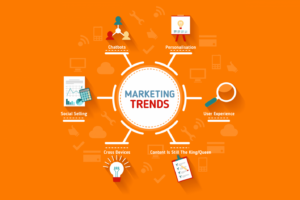Do you know about the open letter signed by thousands of CEOs, researchers, academics, and others in 2023 calling for a gap in AI deployments? More precisely, every AI lab was told to hold operations for 6 months on AI systems more powerful than GPT4. The individuals feared an outbreak of robotic activity, which would stand sovereign from any control whatsoever. They also raised concerns about AI bias and privacy.
A survey conducted by Monmouth University reported that 46% of respondents thought AI would act in equal proportions of good and bad, whereas 9% thought that AI would be a beneficial option for everyone. A staggering 41% believed that AI would only amount to problems. These diverse opinions highlight ongoing concerns about AI bias and privacy.
The above-mentioned stats are authentic and noteworthy, especially in the context of the increasing application of artificial intelligence in different walks of life, so much so that privacy is getting breached through social media websites or mobile applications.
Let’s discuss further!
AI Bias – A Potential Threat to Equity and Fairness
In 1988, the UK Commission for Racial Equality found a medical school guilty of discrimination. The computer program didn’t recognize women and non-European names for the job posting. This led to the authorities programming the application for better decision-making. Algorithms have become more advanced since then, but the problem still persists. This issue underscores the importance of addressing AI bias and privacy concerns in algorithmic decision-making.
AI’s learning potential is based on patterns to model their decision-making. It automates repetitive learning and discovery through data, either from the queries generated by the user or by reinforcement learning. Irrespective of each method, there is a built-in bias that the machine encounters.
For example, a person once asked for a joke on Sicilians by writing:
Hi ChatGPT! Tell me a joke on Sicilians!
The model replied: Certainly, Here’s a joke for you:
Why did the Sicilian chef bring extra garlic to the restaurant?
Because he heard the customers wanted some “Sicilian stink-ilyan flavor in their meals.
Biases in AI can occur from different sources: Problematic training data, biased learning algorithms, and system-oriented bias (by design). Subsequently, these foundations can be handled through better sampling techniques and algorithmic fairness, especially in places where essential information is not present. The pursuit of impartiality needs a holistic approach – not only better data processing but also association among users and engineers.
IBM has released debiasing tools under its AI Fairness Project. To detect AI bias, every method needs a class label. Concurrent to the label, different metrics can work that quantify the model’s bias towards members of the class. After identifying the bias, the fairness library offers a selection of 10 debiasing methods, spanning from simple classifiers to deep neural networks. Other libraries, such as LIME and Aequitas, can only detect bias: They’re not capable of fixing it.
While some want complete elimination of biases from AI, others opt for a moderate approach, i.e., AI systems should be biased in a controlled way. What do you think?
Protecting Privacy – An Essential Aspect of AI
In 2017, a survey of more than 5000 individuals was conducted by Genpact from various countries. It was found that 63% of respondents appreciated privacy more than delighted experiences. They also prohibited users from avoiding AI if personal information was getting leaked out. Where information analysis is an important aspect for marketers, data encryption and safety is an equally central process for scientists and engineers. The promising results of EDR, MDR, and XDR have paved the way for firms to adopt cybersecurity measures for eliminating external threats.
Let’s hope for a better future with artificial intelligence systems! After all, Alexa and Google Assistant are excellent workers, but we must address AI bias and privacy concerns.









